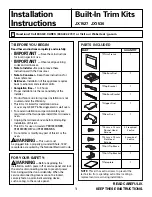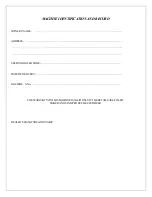
Section 5 Sensor Communication
31
FT205EV Wind Sensors
– User Manual
5 SENSOR COMMUNICATION
5.1 Introduction
The sensor features an easy to use ASCII-based communication protocol transmitted over either RS422 (full-
duplex), RS485 (half-duplex) serial link or buffered UART (full-duplex, 3V and 5V TTL compatible). The protocol
incorporates checksum validation to ensure the integrity of all data transmissions. In addition to the FT
Technologies proprietary protocol the sensor can output the common NMEA 0183 MWV (Wind Speed and Angle)
sentence. Refer to Section 6.4.7 for information on how change communication mode.
The different communication protocols require consideration by a suitably experienced engineer for the required
functionality. Below are some generalised (but not comprehensive) points:
•
RS422 networks permit multiple FT wind sensors to be connected. The 4-wire connection allows full-
duplex operation but may use more current in certain configurations
•
RS485 (half-duplex) networks permits multiple FT wind sensors to be connected. The 2-wire connection
permits half-duplex operation and may require additional software controls when multiple wind sensors
are connected to a network. 2-wire networks may be simpler to build
•
UART networks permit 1 FT sensor to be connected in a 2-wire connection. Typically used with shorter
cable lengths
The user should review the compatibility of their intended application with the proposed communication standard.
User applications may require specific wiring, timing, control logic and safety processes.
5.2 RS422 & RS485 Protocol
Slew-rate limited drivers are used to reduce EMI and minimize reflections from improperly terminated transmission
lines and stubs. The signal state definitions for the serial interface data lines are as follows:
- RS485 The idle, marking, logi
cal “1”, OFF or stop bit state is defined by a negative voltage on line A with
respect to line B.
- RS485
The active, spacing, logical “0”, ON or start bit state is defined by a positive voltage on line A with
respect to line B.
- RS422 - The idle,
marking, logical “1”, OFF or stop bit state is defined by a negative voltage on line A with
respect to line B.
- RS422 -
The active, spacing, logical “0”, ON or start bit state is defined by a positive voltage on line A with
respect to line B.
Circuit examples are provided in Figure 23 and Figure 24. Refer to Section 6.4.7 for information on how change
communication mode.
If two or more wind sensors are to be installed, it is possible to use the same 2-wire RS485 data link to connect
all the sensor units to the computer.
Before using a RS485 configured sensor in a multi-device system, the Listener identifier of each sensor must be
set to a unique value. Use the ID command (Section 6.4.17) to set the Listener identifier for each sensor. If the
Listener identifiers are being set in the final host system, then it is important that only one sensor be connected
at a time to the RS485 bus until all devices have been assigned a unique Listener ID. Great care should be
exercised when using the ‘//’ characters for addressing. The ‘//’ address characters can be used to send a SET
command simultaneously to all sensor units (for example, to enable or disable filtering). Under no circumstances
should the ‘//’ characters be used with any QUERY commands since this will cause all sensor units to transmit
data resulting in bus contention.
















































